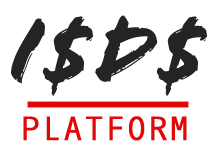Trump grants one-month tariff reprieve to some goods from Mexico, Canada
All the versions of this article: [English] [français]
The Washington Post | 7 March 2025
Trump grants one-month tariff reprieve to some goods from Mexico, Canada
MEXICO CITY — President Donald Trump on Thursday postponed for another month imposing tariffs on certain Mexican and Canadian products that comply with the North American free-trade treaty — the latest swerve in the roller coaster of U.S. trade relations roiling financial markets for a third straight day.
Mexican President Claudia Sheinbaum said she persuaded Trump to push off the penalties in a phone call Thursday morning. Trump had threatened in early February to impose 25 percent tariffs on all Mexican and Canadian goods, citing what he called the countries’ failure to stem illegal migration and fentanyl trafficking, but he delayed them for a month as the countries scrambled to strengthen border security. They took effect Tuesday.
The pause on tariffs applies only to imports that comply with the free-trade agreement between the United States, Canada and Mexico signed during Trump’s first term. About 50 percent of goods from Mexico and 62 percent from Canada, including computers, will still face the tariffs implemented this week, a White House official said Thursday. Canadian energy and potash, a key component of fertilizer, will be taxed at a lower rate of 10 percent.
Earlier in the day, Trump said on his Truth Social platform that he suspended the tariffs on Mexico until April 2 “as an accommodation, and out of respect for, President Sheinbaum. Our relationship has been a very good one, and we are working hard, together, on the Border, both in terms of stopping Illegal Aliens from entering the United States and, likewise, stopping Fentanyl.” He made the announcement a day after granting a narrower tariff exemption to carmakers.
Trump did not originally indicate he was easing tariffs on Canada at that point, but he included the country’s imports in an executive action signed Thursday afternoon. Prime Minister Justin Trudeau said Thursday that he expected Canada to be in a trade war with the United States for the “foreseeable future.” His government, he added, was “actively engaged” in negotiations to seek tariff relief for certain sectors.
The whiplash in tariff news sent financial markets sliding again, with the Dow Jones Industrial Average down about 1 percent and the S&P 500 down 1.8 percent at the close of trading, as investors continue to worry about uncertainty in trade policy.
“Are the tariffs on? Are they off? Who knows what’s next?” said Mike Schumacher, head of macro strategy at Wells Fargo. “The market is just trying to digest the constant flow of news. You don’t have to be a bond person or a market savant to see that all of this uncertainty is emblematic of more risk.”
Trump’s plan to impose tariffs on everything Americans buy from Mexico and Canada would likely propel prices higher — an extraordinary gamble when consumers are already fretting about inflation and after voters delivered the Republican back to power in part because they hoped he would cut prices. In Trump’s Tuesday address to Congress, he asked Americans to bear with him, saying the short-term disruption would be worth the long-term gain.
“This is what tariffs are designed to address — leveling the playing field such that the international trading system begins to reward ingenuity, security, rule of law and stability — not wage suppression, currency manipulation, intellectual property theft … and draconian regulations,” Treasury Secretary Scott Bessent said at the Economic Club of New York on Thursday. He also said that “access to cheap goods is not the essence of the American Dream.”
But some conservative economists, even those who have counseled Trump in the past, said they are scratching their heads at the administration’s erratic approach.
“Gosh, I don’t really know what to think — it seems to change every hour in terms of what the negotiation is,” said Stephen Moore, a visiting fellow at the Heritage Foundation and an economic adviser to Trump in his first term. “My overall thinking is that this is not a great time to be brandishing the tariff sword, given the fidgety stock market and the fact that we’re going to get a jobs report [Friday] that’s probably not going to be too good. Trump has inherited a lot of mess from Biden, but his job number one should be getting the economy up and running.”
In Mexico, Sheinbaum noted in a morning news conference that she had sent 10,000 national guard troops to the U.S. border after Trump threatened tariffs in early February. She also transferred 29 high-level drug operatives to the United States, a dramatic move that legal scholars said violated Mexican law.
The Mexican troops, according to the country’s security ministry, have found only about 130 pounds of fentanyl at the border since early February. But Sheinbaum portrayed Mexico’s measures as discouraging traffickers from moving the deadly drug to the United States in the first place.
Sheinbaum said Trump initially suggested going ahead with the tariffs and then evaluating the results. She responded by listing Mexico’s accomplishments, she said, and noted the tariffs. “How can we continue cooperating, collaborating,” Sheinbaum asked Trump, “when this hurts the people of Mexico?”
“It wasn’t a threat — no, no, no. It was simply — ‘Understand me. The most important thing is my people,’” she told Trump, according to her account Thursday. “‘And I need to continue collaborating and cooperating with you, but in a situation of equality.’”
Mexico is heavily dependent on trade, with about 80 percent of its exports going to its northern neighbor.
Sheinbaum has consistently said Mexico was ready to respond to Trump’s measures with retaliatory tariffs, if necessary. But, unlike Trudeau, she has held off on announcing them, pressing for a diplomatic solution. She has publicly emphasized Mexico’s sovereignty while quietly accepting deportees not just from Mexico but from other countries.
Meanwhile, in Canada, Trump’s tariffs and threats to make Canada the 51st state have drawn fury and severely fractured U.S.-Canada ties. Canada sends 80 percent of its exports to the United States, and economists forecast that the tariffs could tip the economy into a recession.
Canada earlier this week imposed retaliatory tariffs on $20 billion worth of U.S. goods and planned to impose levies on an additional $90 billion worth of goods 21 days later. Canadian Finance Minister Dominic LeBlanc said Thursday in a post on X that the government will delay the second round of retaliatory tariffs until April 2, “while we continue to work for the removal of all tariffs.”
Canadian cabinet ministers, diplomats, top law enforcement authorities, provincial premiers and business leaders have in the past month made a diplomatic push to stave off the tariffs, traveling to the United States to meet with their U.S. counterparts. They’ve touted a $900 million border plan that Canadian officials unveiled in December and pointed out that less than 1 percent of fentanyl seized by U.S. authorities at land borders in the 2024 fiscal year came from Canada.
Trump has targeted Mexico and Canada because he said they have not sufficiently secured their border with the United States. But he is also seeking to force manufacturing and other industry back inside U.S. borders after decades of them moving elsewhere. The 1994 North American Free Trade Agreement, or NAFTA, spurred relocation and the reshuffling of jobs, especially to Mexico, where wages are lower.
Reduced trade barriers and outsourcing since the mid-1990s have contributed to the loss of 4.5 million manufacturing jobs in the United States, although many economists say that much of the decline came from automation. They say free trade helped create years of lower prices for American consumers.
The White House on Wednesday had already postponed tariffs on car manufacturing that had duty-free status under the free-trade agreement negotiated during Trump’s first term. The big three U.S. automakers had campaigned against the tariff plan, saying their supply chains and manufacturing would be grievously hit.
It wasn’t immediately clear exactly which goods would be most affected by the administration’s newest policies. But certain imports — like computers, beer and fertilizer — that have traditionally been exempt from tariffs may now face a 25 percent tax because they don’t technically fall under the purview of the United States-Mexico-Canada Agreement, said Daniel Anthony, president of Trade Partnership Worldwide, a research firm.
“These are products that don’t play in the USMCA because they’ve never had a need to — they were duty-free, regardless of what country they were coming in from,” he said. “But now that’s been turned on its head.”
The back-and-forth on tariffs is upending business for multinational companies that have recently set up shop in Canada and Mexico, in part as a response to Trump’s trade war with China during his first term.
“We’re living the definition of a roller coaster,” said Javier Zarazua, a managing partner at JL Nearshoring, which helps companies set up manufacturing operations in Mexico. “It’s chaos, pure chaos, right now. Generally speaking, one-third of our customers are afraid. They’re not investing, they’re not moving forward with anything until this situation is defined.”
But others, he said, are more hopeful that the fast-moving developments mean the White House isn’t wedded to long-term tariffs on Mexican imports. “Trump is a dealmaker, and this is just the first part of his negotiation,” he said. “It’s not good to have all of this noise, but I’m sticking to my guns: Mexico still has a lot to offer.”





